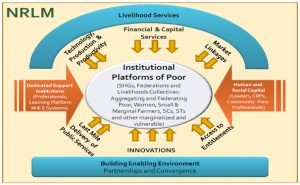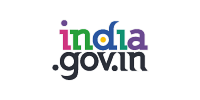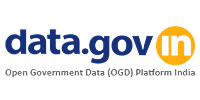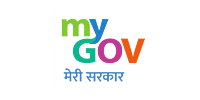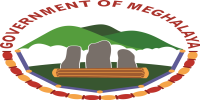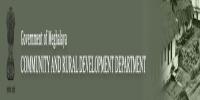In 2009, MoRD developed a strategic paper entitled “Poverty Eradication in India by 2015: Rural HH centered Strategy”. This paper draws lesson from experience of SGSY and other poverty reduction initiatives in India. As per this paper, it is estimated that out of estimated 70 million rural BPL HH, 45 million still needs to be organized into SHGs. Based on it, MoRD decided to restructure SGSY through establishment of NRLM and the Government of India approved it in 2010 and was formally launched on June 2011 in Rajasthan.
National Rural Livelihood Mission (NRLM)
“To reduce poverty by enabling the poor households to access gainful self-employment and skilled wage employment opportunities, resulting in appreciable improvement in their livelihoods on a sustainable basis, through building strong grassroots institutions of the poor.”
The poor have a strong desire and innate capabilities to come out of poverty. They are entrepreneurs.
The core values which will guide all the activities under NRLM are as follows:
- Inclusion of the poorest, and meaningful role to the poorest in all the processes
- Transparency and accountability of all processes and institutions
- Ownership and key role of the poor and their institutions in all stages – planning, implementation, and monitoring
- Community self-reliance and self-dependence
NRLM works on three pillars –
- Enhancing and expanding existing livelihoods options of the poor
- Building skills for the job market outside
- Nurturing self-employed and entrepreneurs (for micro-enterprises).
- Poor have strong desire to come out of poverty & the innate capabilities to do so.
- Social mobilization & building strong institutions of the poor is critical for unleashing the innate capabilities of the poor.
- An external dedicated & sensitive support structure is required to induce the SM, IB & empowerment process.
- Facilitating knowledge dissemination, Skill building, access to credit, access to market & other livelihoods services underpins this upward mobility.
Out of the estimated 7.0 crore rural BPL households (2010 projections of BPL households), 4.5 Crore households still need to be organized into SHGs.
Even the existing SHGs need further strengthening and greater financial support.
The magnitude of the unfinished task is enormous.
It was in this background, Government has approved the restructuring the SGSY as the National Rural Livelihoods Mission (NRLM), to be implemented in a mission mode across the country.
Universal Social Mobilization
50% SC/ST, 15% Minorities, 3% PWD, 100% coverage of BPL families
Promotion of Institution of the poor
Village & higher level federations, livelihoods collectives, producers’ cooperatives/companies, forward-backward linkages etc.
Training for capacity/skill building
Management, Market linkages, CRPs, ICT
Revolving Fund & Capital Subsidy
10-15000/SHG , 70% ST/SC BPL member
Universal Financial Inclusion
Both demand & supply side, insurance, remittances, Bank Mitras, Bima Mitras
Provision of Interest Subsidy
> 7% PA (>70% BPL families) till every member avail cum. Loan of 1 lakh.
Livelihoods
Look at the entire portfolio of livelihoods and work towards stabilizing & enhancing existing livelihoods and subsequently diversifying it.
Infrastructure creation & Marketing support
Market research, market intelligence, technology extension, backward-forward linkage, Rural Haats ( 25% of fund).
Skills & Placement Projects
Partnership with Public, Private, NGO/CBO, NSDC (15% of central allocation)
Rural Self Employment Trg. Institute(RSETIs)
PSB to set up RSETIs in all dist. need based experiential learning program followed by handholding support and partner with CBOs
Innovations
Innovation which have potentials for reaching out specifically to POP with largest nos. for maximum impact with limited resources. (5% of central allocation)
Convergence & Partnership
Convergence with other programs of MoRD & other central/state govt. programs. Partnership with NGOs/CBOs at strategic & implementation levels.
Linkages with PRIs
Formal platform to be established for regular consultation for advice, support, sharing of resources. Traditional Local village institution to replace PRIs where PRIs are not available.
Technical Support
Build a national pool of experts, practitioners and advisers in all the relevant disciplines to provide handholding support to SLRM for developing & executing SPRS.
Sensitive Support Structure
Dedicated & sensitive structure at National, State, Dist. & Sub-district levels staffed with professionally competent and dedicated human resources. Suitable linkages with DRDA and PRIs.
Support structure
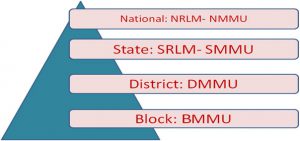
Monitoring & Learning
Web enabled comprehensive MIS, visit by senior colleagues, Process monitoring studies, thematic studies, impact evaluation
Funding Pattern
75:25(90:10 for NE, 100% for UTs) to be distributed in relation to the incidence of poverty in the states.
Phased Implementation
Pilot blocks, Intensive and Non-intensive blocks. The program to reach all blocks & districts by end of 12th FYP.
Transition to NRLM
All states/UTs would have to transit to NRLM within a period of 1 Yr. from the date of formal launch of NRLM.
With a mission to reduce poverty by enabling the poor to access gainful self-employment and skilled wage employment through their institution, NRLM willreach out, mobilize & support 7 crore BPL h/h across 600 districts, 6000 blocks, 2.5 lakh GPs in 6 lakh villages through self-managed SHGs and its federated institution of the poor and support them for livelihoods collectives in a period of 8-10 years.
Particular focus on more vulnerable sections like:
- Scheduled castes
- Scheduled tribes
- Particularly vulnerable tribal groups (PTG)
- Single women and women headed households,
- Disabled,
- Landless,
- Migrant labour,
- Isolated communities and communities living in disturbed areas
Initially, the NRLM/Aajeevika project period is from 2012-13 to 2017-18 to cover all the 39 C&RD blocks of the 11 districts of the state in a phase manner. The programme will be rollout first in four pilot blocks of two districts namely; Rongram & Dallu blocks of West Garo Hills district and Mairang & Mawshynrut blocks of West Khasi Hills district respectively as per provision of 25% of district and 10% of block of the state. Of these four pilot blocks, Rongram and Mairang blocks will be the resource block and implement external CRP strategy of any of the notified Resource Organization which MSRLS will entered a partnership. The remaining Blocks will be treated as Non-intensive Blocks and continue with the existing systems of SGSY programme.
MSRLS will engage NGOs/CBOs in some of the Non-intensive Block which has the presence of good NGOs/CBOs with proven track record good implementations of various rural development projects in the block(s).
The programme will be roll out in phase manner as given below:| YEAR | DIST. COVERAGE | BLOCK COVERAGE | |
|---|---|---|---|
| INTENSIVE BLOCKS | NON-INTENSIVE BLOCKS | ||
| 1st | 2 | 4 | 35 |
| 2nd | 5 | 10 | 29 |
| 3rd | 7 | 15 | 24 |
| 4th | 11 | 25 | 14 |
| 5th | 11 | 39 | 0 |
The Meghalaya State Rural Livelihoods Society (MSRLS) provides access to all relevant guidelines and documents for implementing Non-Farm Livelihoods programs and Reforms.
To explore the official guidelines and documents, please refer to the links below:
For further information or assistance, please get in touch with MSRLS.

